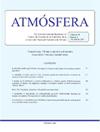Using a hybrid approach for wind power forecasting in Northwestern Mexico
IF 1
4区 地球科学
Q4 METEOROLOGY & ATMOSPHERIC SCIENCES
引用次数: 0
Abstract
Wind energy is an important renewable source that has been considerably developed recently. In order to obtain successful 24-h lead-time wind power forecasts for operational and commercial uses, a combination of physical and statistical models is desirable. In this paper, a hybrid methodology that employs a numerical weather prediction model (Weather Research and Forecasting) and a neural network (NN) algorithm is proposed and assessed. The methodology is applied to a wind farm in northwestern Mexico, a region with high wind potential where complex geography adds large uncertainty to wind energy forecasts. The energy forecasts are then evaluated against actual on-site power generation over one year and compared with two reference models: decision trees (DT) and support vector regression (SVR). The proposed method exhibits a better performance with respect to the reference methods, showing an hourly normalized mean absolute percentage error of 6.97%, which represents 6 and 13 percentage points less error in wind power forecasts than with DT and SVR methods, respectively. Under strong synoptic forcing, the NN wind power forecast is not very accurate, and novel approaches such as hierarchical algorithms should be employed instead. Overall, the proposed model is capable of producing high-quality wind power forecasts for most weather conditions prevailing in this region and demonstrates a good performance with respect to similar models for medium-term wind power forecasts.在墨西哥西北部使用混合方法进行风力预测
风能是一种重要的可再生能源,近年来得到了很大的发展。为了获得成功的用于运营和商业用途的24小时提前期风电预测,需要将物理模型和统计模型结合起来。本文提出并评估了一种采用数值天气预报模型(weather Research and Forecasting)和神经网络(NN)算法的混合方法。该方法应用于墨西哥西北部的一个风力发电场,该地区风力潜力巨大,复杂的地理位置为风能预测增加了很大的不确定性。然后根据一年的实际现场发电量对能源预测进行评估,并与两种参考模型进行比较:决策树(DT)和支持向量回归(SVR)。与参考方法相比,本文方法具有更好的性能,每小时归一化平均绝对百分比误差为6.97%,与DT和SVR方法相比,误差分别减小了6和13个百分点。在强天气强迫下,神经网络风电预测精度不高,需要采用分层算法等新方法进行预测。总的来说,建议的模型能够为该地区的大多数天气条件提供高质量的风力预测,并且与类似的中期风力预测模型相比表现良好。
本文章由计算机程序翻译,如有差异,请以英文原文为准。
求助全文
约1分钟内获得全文
求助全文
来源期刊

Atmosfera
地学-气象与大气科学
CiteScore
2.20
自引率
0.00%
发文量
46
审稿时长
6 months
期刊介绍:
ATMÓSFERA seeks contributions on theoretical, basic, empirical and applied research in all the areas of atmospheric sciences, with emphasis on meteorology, climatology, aeronomy, physics, chemistry, and aerobiology. Interdisciplinary contributions are also accepted; especially those related with oceanography, hydrology, climate variability and change, ecology, forestry, glaciology, agriculture, environmental pollution, and other topics related to economy and society as they are affected by atmospheric hazards.
 求助内容:
求助内容: 应助结果提醒方式:
应助结果提醒方式:


